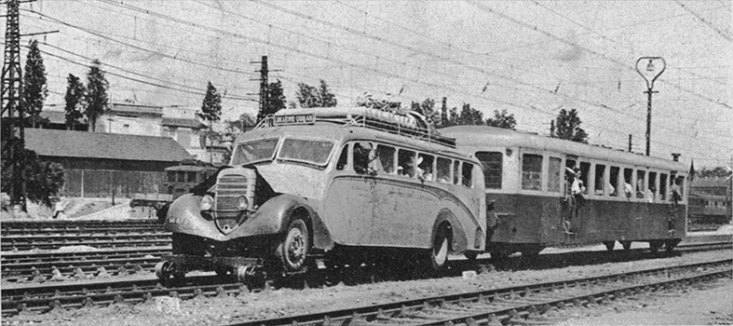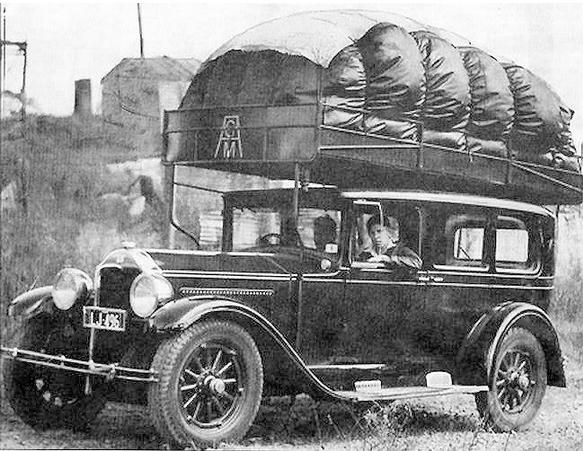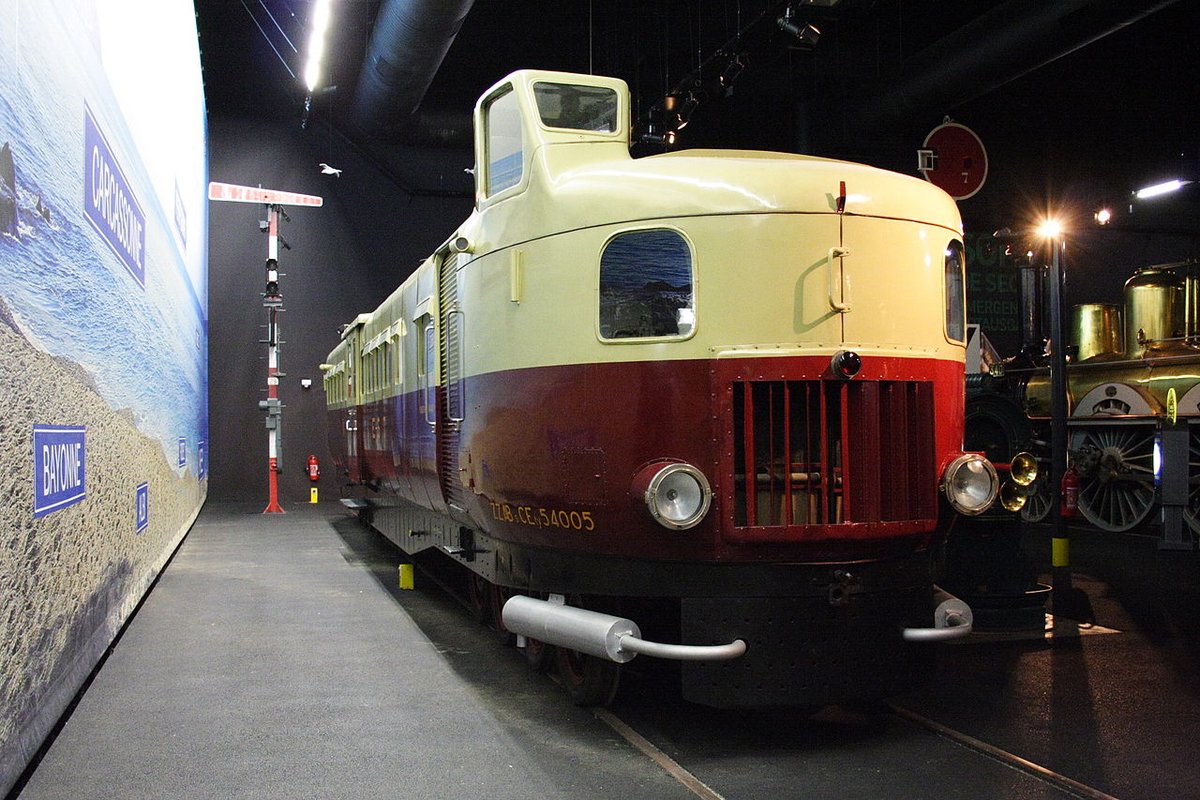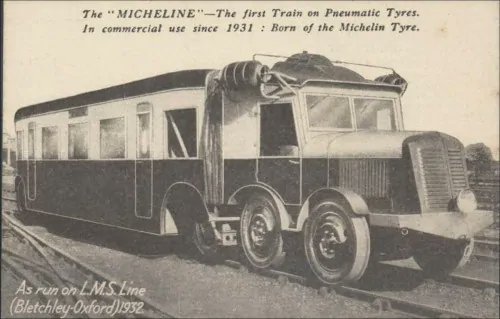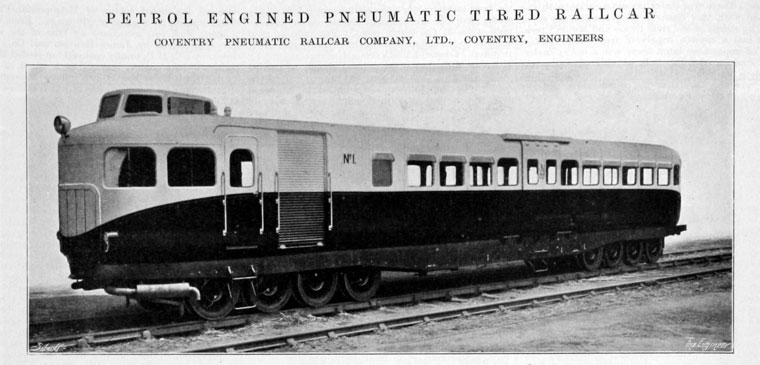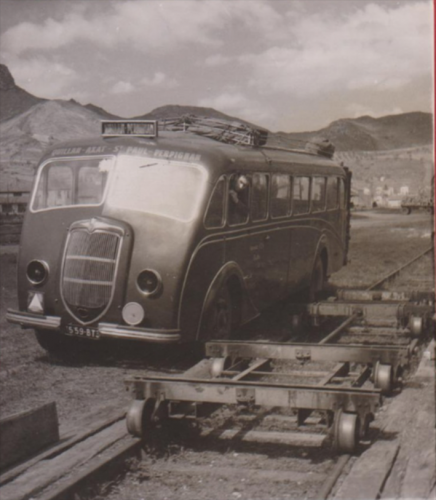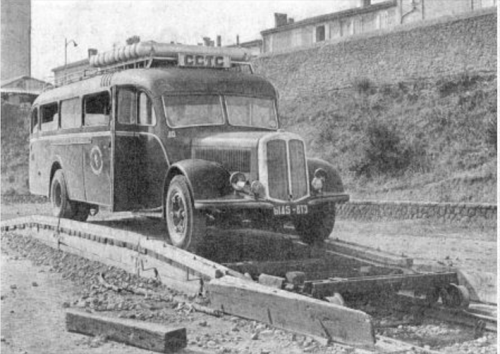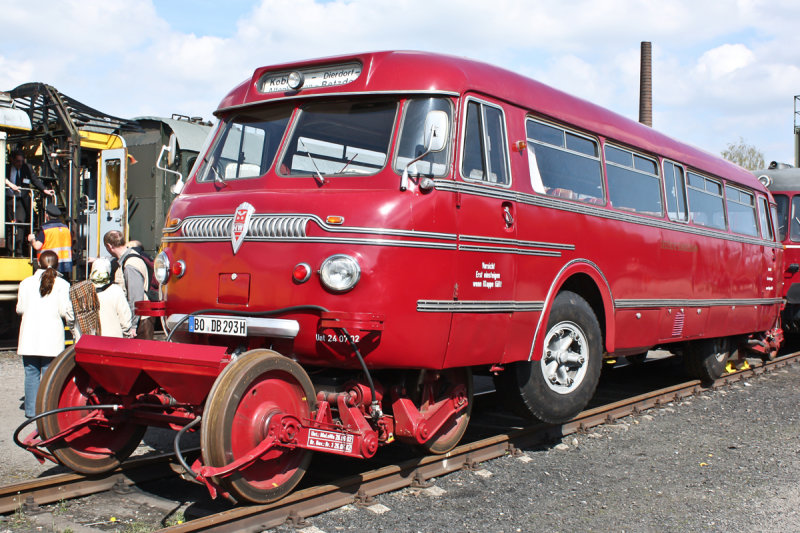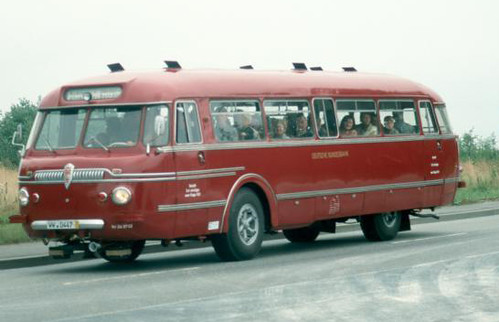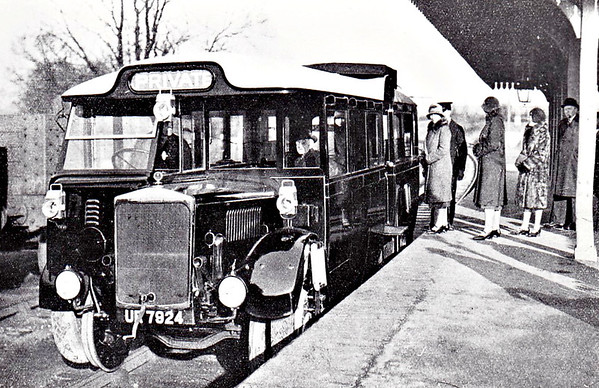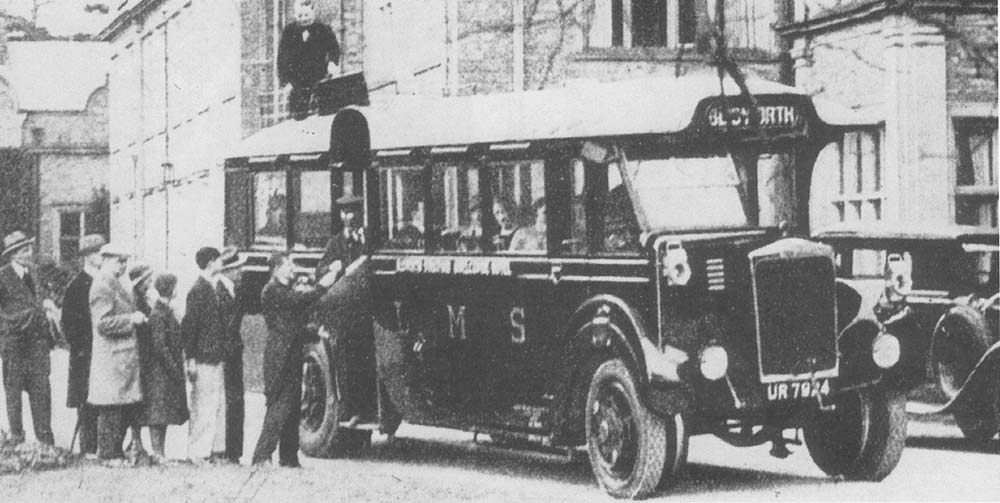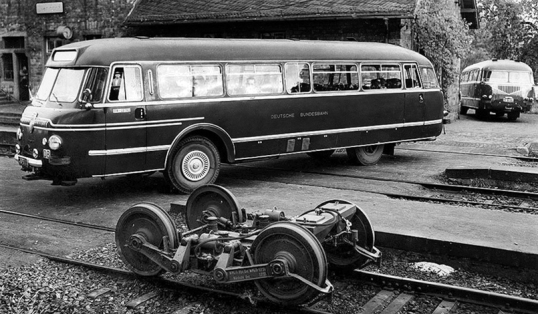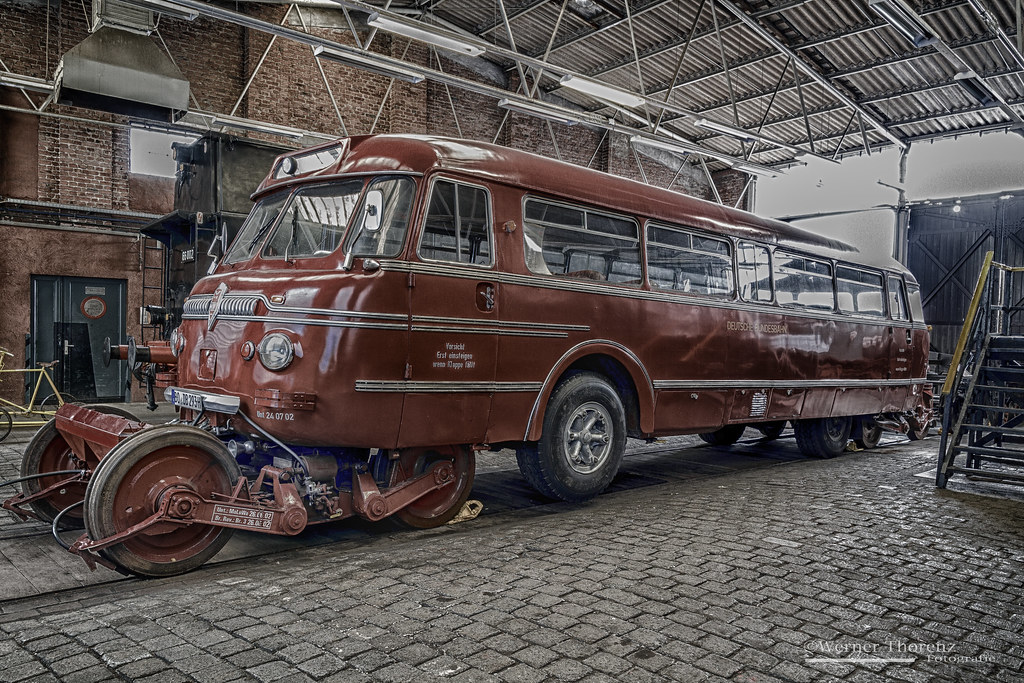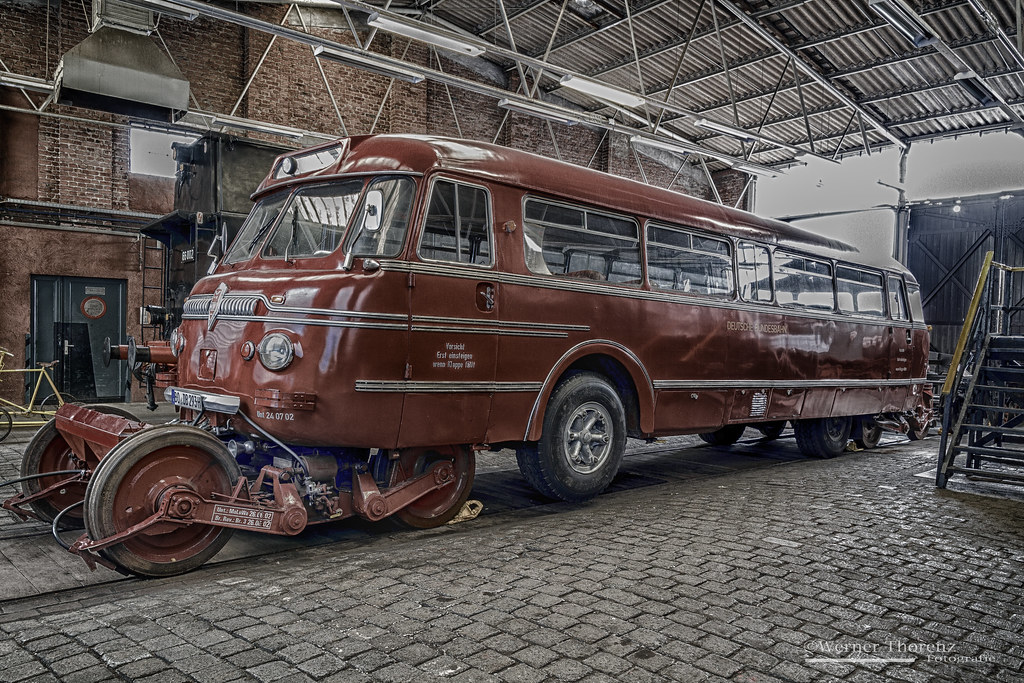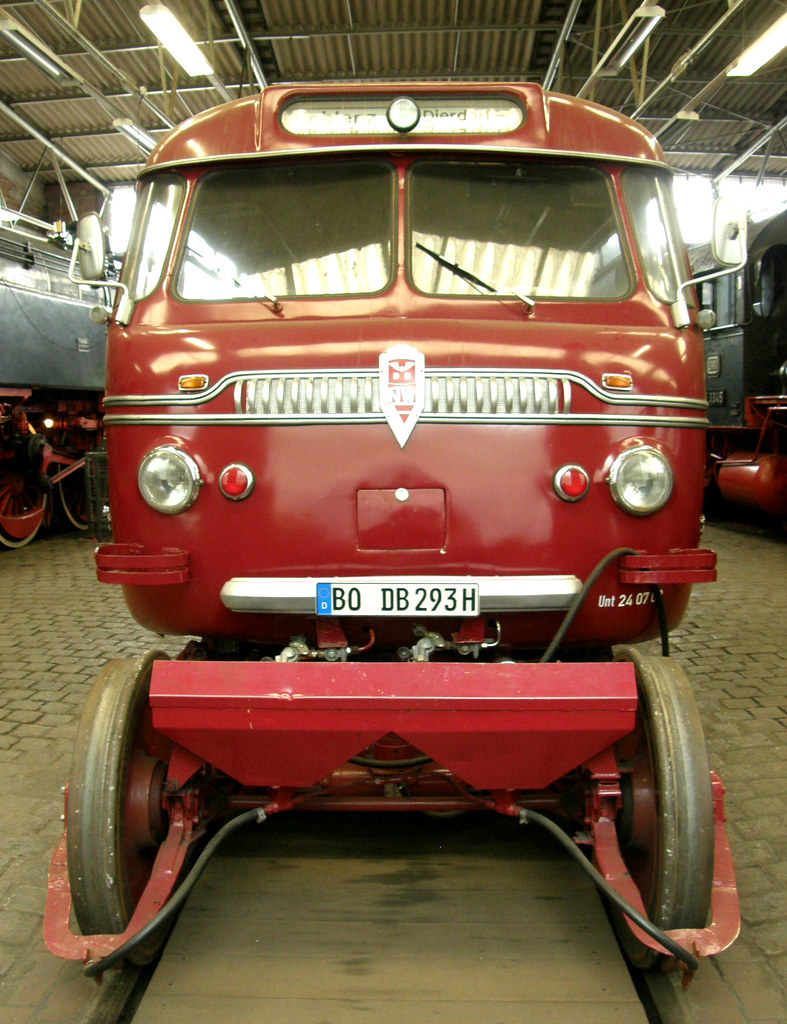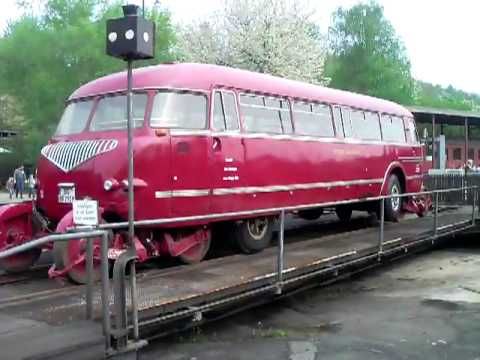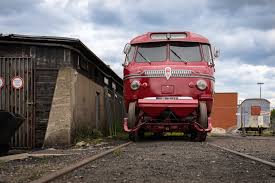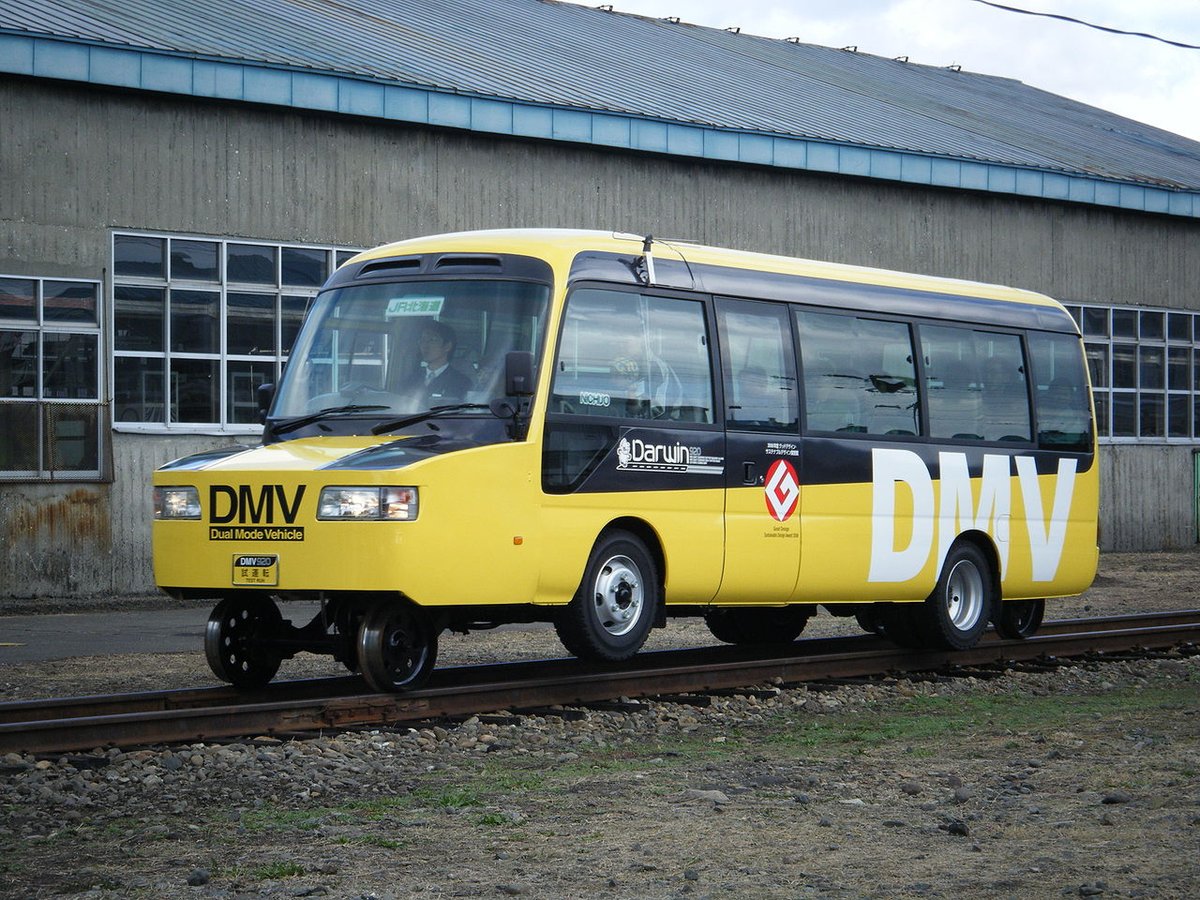They say that necessity is the mother of invention.
At times it& #39;s closer to the Bride of Frankenstein...
At times it& #39;s closer to the Bride of Frankenstein...
It& #39;s worth unpicking how we got here, "here" being the Carcassone-Quillan railway line in 1943 Vichy France.
First up, the Germans had requisitioned all the fuel. This meant pivoting to burning wood gas - the fuel of choice for low-flying blimps since 1901.
First up, the Germans had requisitioned all the fuel. This meant pivoting to burning wood gas - the fuel of choice for low-flying blimps since 1901.
Michelines, incidentally, had been used experimentally in Britain. The first one was... not a looker.
At some point it dawned on someone that basic aesthetics were a thing. The excitingly-named Coventry Pneumatic Railcar Company built a couple under licence for trials in the UK:
Michelines needed diesel and weren& #39;t easily converted to other fuels. With 65,000 wood gas powered vehicles in France, the Vichy government demanded that the railway switch to the obvious solution: run a bus service instead.
Augustin Talon saw a loophole...
Augustin Talon saw a loophole...
Humping the buses up onto bogies turned them into pseudo-Michelines whilst still very obviously being buses. As a bonus, a carriage could be attached and about 150 people carried per trip - more than previously. Traffic soared.
The three month & #39;experiment& #39; lasted until 1946.
The three month & #39;experiment& #39; lasted until 1946.
Proving that no idea is too stupid to avoid trying twice, German engineers later had a go.
The result was every bit as ridiculous as you might hope.
The result was every bit as ridiculous as you might hope.
In fact, with ruthless German efficiency this thing combined TWO stupid ideas. Not only was it a bus that ran on rails, it was also a ro-railer...
Here it is on the road. It looks fine until you notice the back wheels.
Here it is on the road. It looks fine until you notice the back wheels.
The ro-railer bus as a concept is one of those stupid ideas that cannot stop resurfacing. Here& #39;s the LMS Karrier stinking up the line circa 1931:
Two years of experimental development failed to alert the LMS to the idea that the ro-railer was a daft idea. It briefly made holidays in Stratford Upon Avon even more depressing for a few weeks, broke an axle, and was quietly disposed of.
Combining two bad ideas together makes absolute mathematical sense, albeit purely because multiplying two negatives makes a positive.
The Schi-Stra-Bus is why you should never trust an engineer who says it& #39;ll work fine according to their calculations.
The Schi-Stra-Bus is why you should never trust an engineer who says it& #39;ll work fine according to their calculations.
Only 15 were ever used on the rails, which a quick calculation reveals was 15 too many. German Wikipedia claims the 140km between Passau and Cham took five and a half hours to cover at the stately average of 16 miles per hour.
The ultimate problem wasn& #39;t speed though. They topped out at 120kmh on rails. Transitioning between road and rail was slow - ten minutes was timetabled - but not a showstopper.
What stopped them was winter. Or - more precisely - didn& #39;t.
What stopped them was winter. Or - more precisely - didn& #39;t.
It turns out that a lightweight pseudo-locomotive running partially on pneumatic tyres on snow-covered rails has all the braking force of jelly on a waterslide. Getting the thing moving in the first place can hardly have been a laugh either.
Somehow these things remained in service until 1967 on the Koblenz-Betzdorf line, German wikipedia again unreliably suggesting that they were regularly overloaded with passengers.
If nothing else the saga of the Schi-Stra-Bus finally proves that the Germans definitely have a sense of humour. And that when they do produce a joke, they take it very seriously...
Want footage? The switching in of the wheels is, erm, not what I was expecting. https://www.youtube.com/watch?v=9ldN0KlxHM0">https://www.youtube.com/watch...

 Read on Twitter
Read on Twitter